So this post is about the deadliest snakes in Israel. But it’s good to know that there are only nine venomous snakes in Israel. Now usually Many would describe an encounter with a snake as one of their worst fears. But actually, from forty two different types of snakes in Israel, only nine of them are venomous. And most of them are only to be found in the south of Israel. So as you can imagine this post is about the deadliest snakes in Israel.
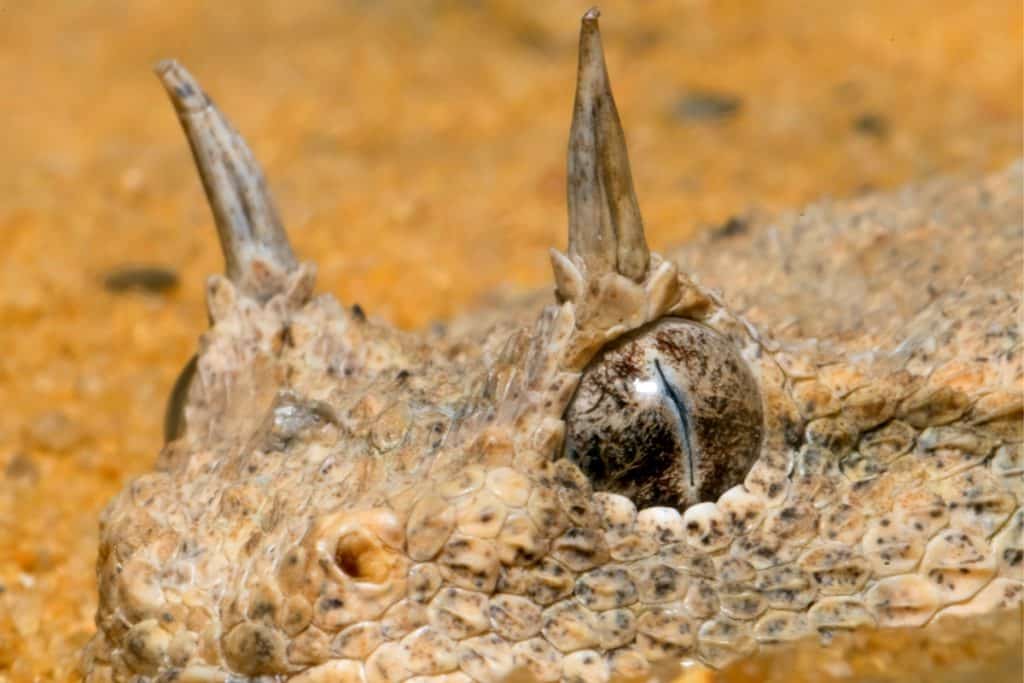
Snakes in the Hebrew Bible
Snakes are mentioned in scripture:
“The young child would put his hand into the viper’s nest.”
Isaiah 11:8
Usually in the Hebrew Bible snakes outside the story of Garden of Eden are always venomous snakes. And the snake in the Bible is always perceived as man’s worse enemy. And exactly like before the man sinned against God and ate from the forbidden fruit. So as told in Isaiah 11:8, the snake and man will live in harmony once more in the time of the end of days.
Palestine Viper (Daboia palaestinae)
Firstly, let’s begin with the Palestine viper is endemic to the Levant. Like all vipers, it is venomous. And considered a leading cause of snakebites within its range. It grows to a maximum of 130 cm and its geographic range from Beersheba to the north of the country.
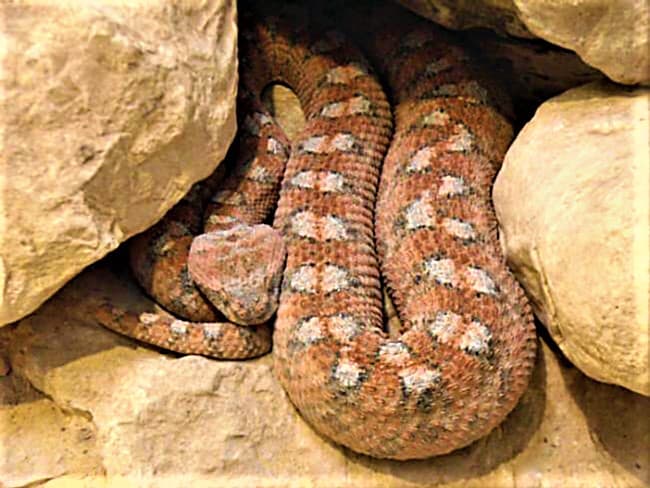
Credit: Guy Haimovitch CC BY SA 3.0
The Deadliest Snakes in Israel: The Lebanon Viper
So this snake is reaching a maximum length of 75 cm; the Lebanon viper is to be found in Israel only at Mt. Hermon and the Golan Heights. In fact, in the wintertime you’ll be lucky (in this case unlucky) to spot the Lebanon viper; because usually at this time of the year, he’s rolled up in his den or under a rock. Also being a cold-blooded (poikilotherm) creature; so he must try and save energy in the winter.
Worth mentioning he is considered very deadly, even though never in Israel a snakebite from a Lebanon viper was never registered. I would recommend you to try and stay away. Usually, when the snake spots humans, he runs away unless provoked.
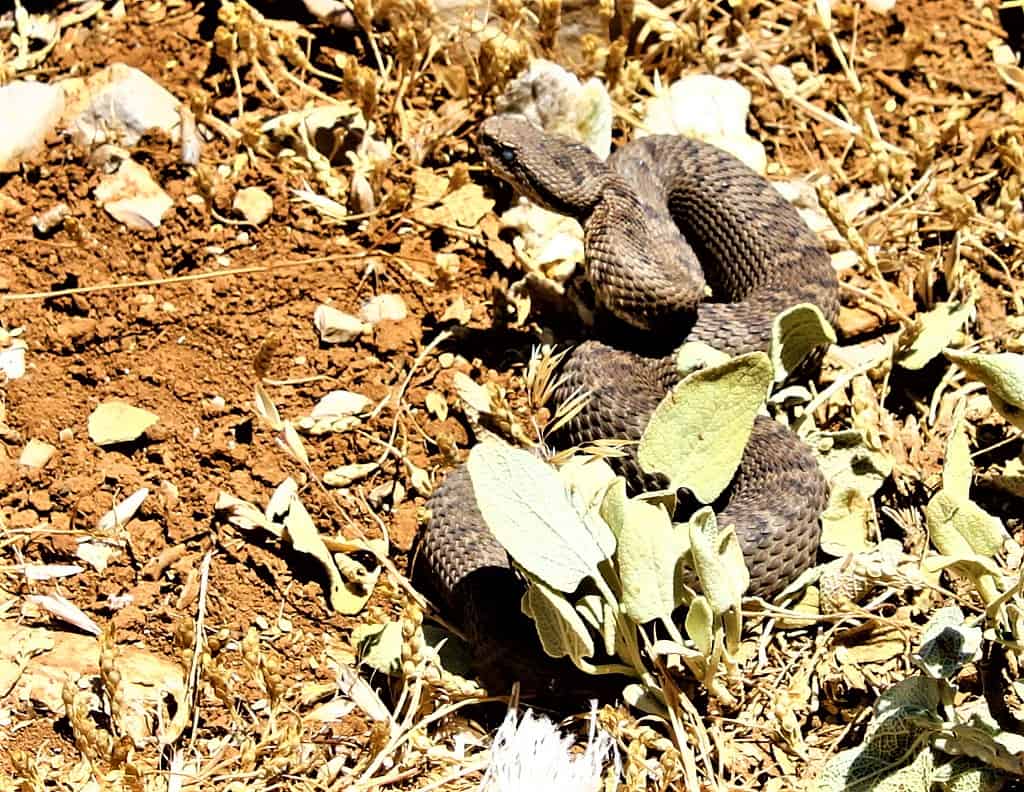
Credit: Mickey Samuni-Blank CC BY SA 3.0
The Deadliest Snakes in Israel: Desert Cobra
Thirdly, the desert cobra is the only cobra we can find in the Land of Israel. This snake is mentioned in the Hebrew Bible.
It is told:
“The infant will play near the Cobra’s den.”
Isaiah 11:8
He’s black and shiny, and his head is a little bigger than the rest of his body. He can reach a maximum length of 130 cm and be found in the Judean Desert, the Arava Valley, and the Negev.
The Deadliest Snakes in Israel: Painted Carpet Viper
A painted carpet viper that just hatched would have a length of about 20 cm and an adult could reach the size of about 80 cm. The painted carpet viper would not lay her eggs in the sand but would use dens, rocks, or narrow wadis. Notably is the usage of the snake for medicine in the Middle Ages, especially for fabricating Theriac; medicine to treat poisoning, bites, and healing various illnesses. Another key fact about this snake is that you can find him only in the desert. So look for it in the Judean Desert; the Negev; the Arava Valley; the Jordan Valley and even on the slopes of Mt. Gilboa.
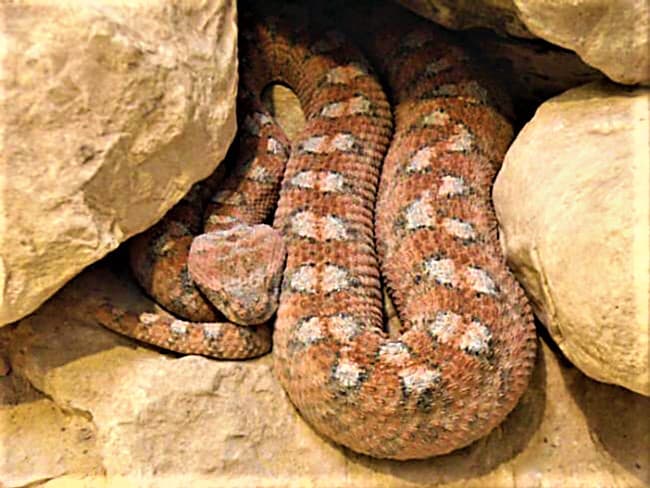
Credit: Androctonus CC BY SA 3.0
The Deadliest Snakes in Israel: Arabian Horned Viper
Surely you should watch out for this type of snake. In Israel, you could run into him in the Arava Valley. The venom of this particular snake is known to be deadly and there is no antivenom. So pay attention when you walk around there. I guess the only consolation is that to this day there are no registered snakebites by the Arabian Horned Viper in Israel till this day.
Animals Living in Sand Dunes
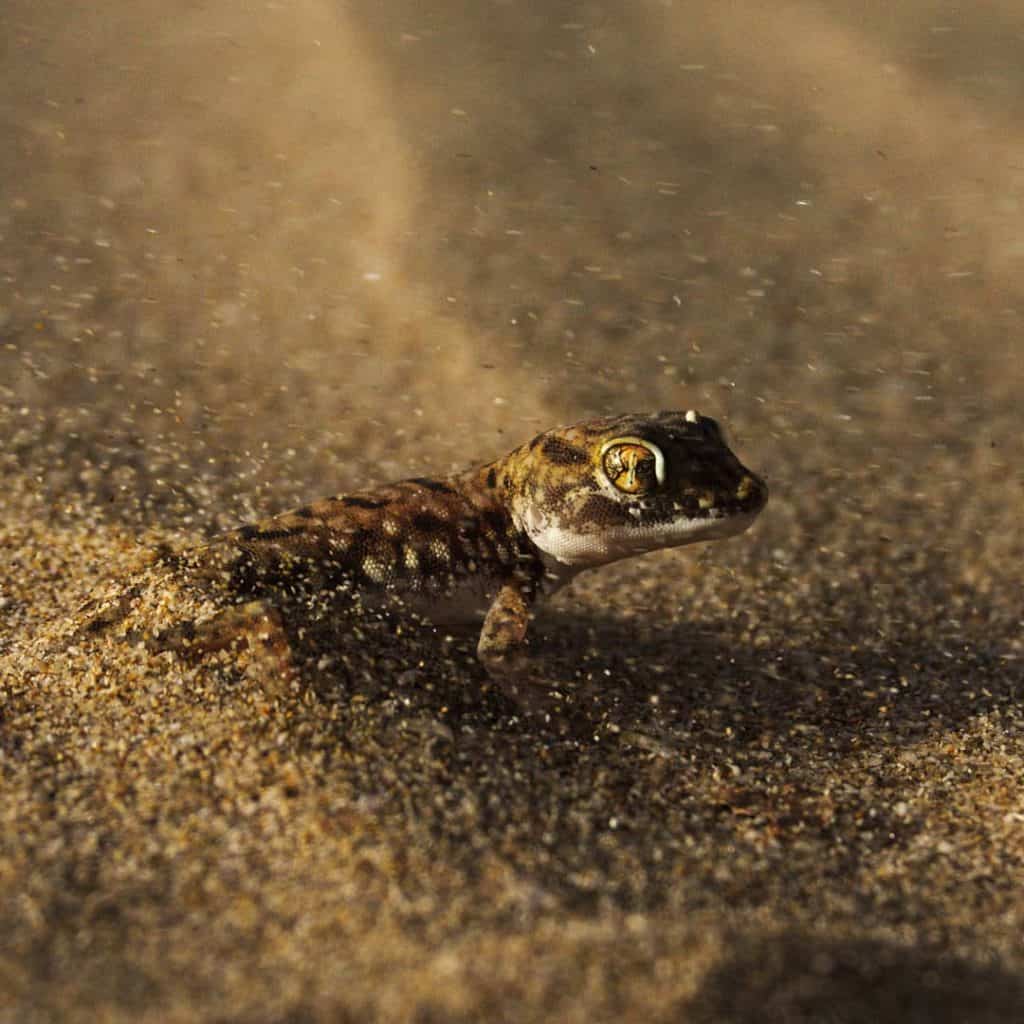
Chiefly is getting his prey by burying himself in the sand, when his eyes only stick out, lurking for his prey, which consists of lizards, small rodents, with insects, including beetles and birds. Usually, when he feels threatened he will turn around would sound like a warning sign and only as a last resort he would try and bite you.
Lastly, he is a nocturnal snake, and he moves sideways, this way when his body meets with the hot sand only in two areas; this way, he can keep his body cool while traveling through the hot sand of the desert because he is a snake that can be found in the desert sands his color tends to be light-colored like the dunes.
The Deadliest Snakes in Israel: Horned Desert Viper
Firstly, it often is easily recognized by the presence of a pair of supraocular “horns”, one over each eye; these may be reduced in size or absent. The color pattern is yellowish and is found in Israel in northern Negev along the Egyptian border.
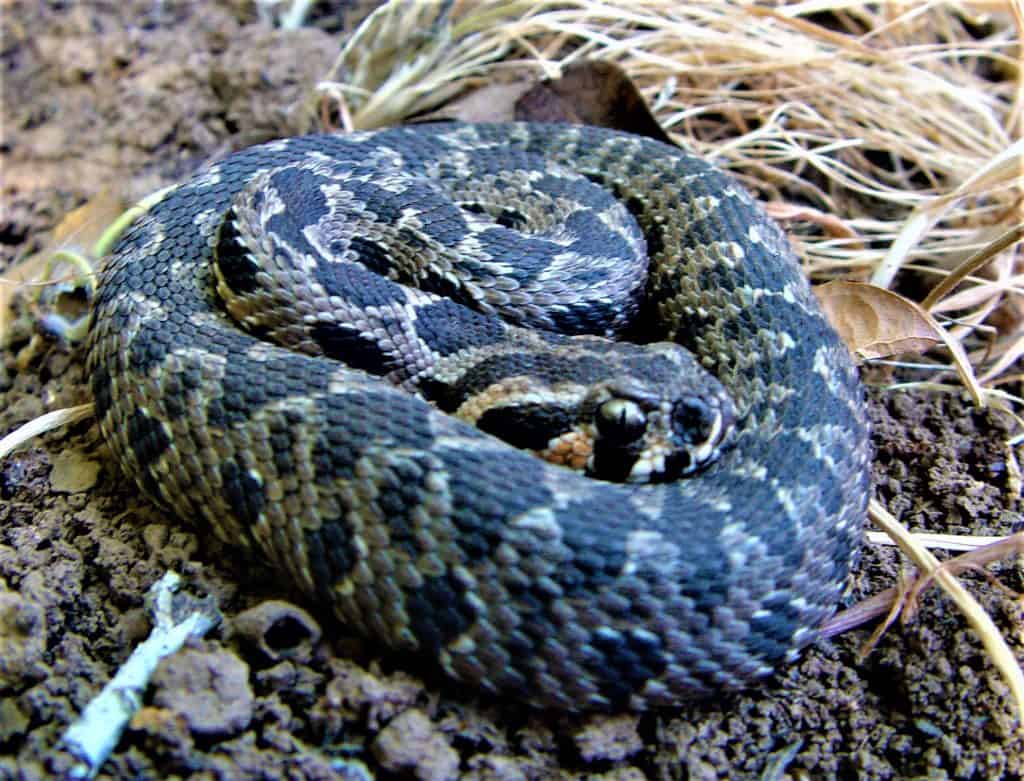
These snakes favor dry, sandy areas with sparse rock outcroppings and tend not to prefer coarse sand. They typically move about by sidewinding and press their weight into the sand or soil. leaving whole-body impressions. Often, it is even possible to use these impressions to make ventral scale counts. They have a reasonably calm temperament, but if threatened, they may assume a C-shaped posture and rapidly rub their coils together.
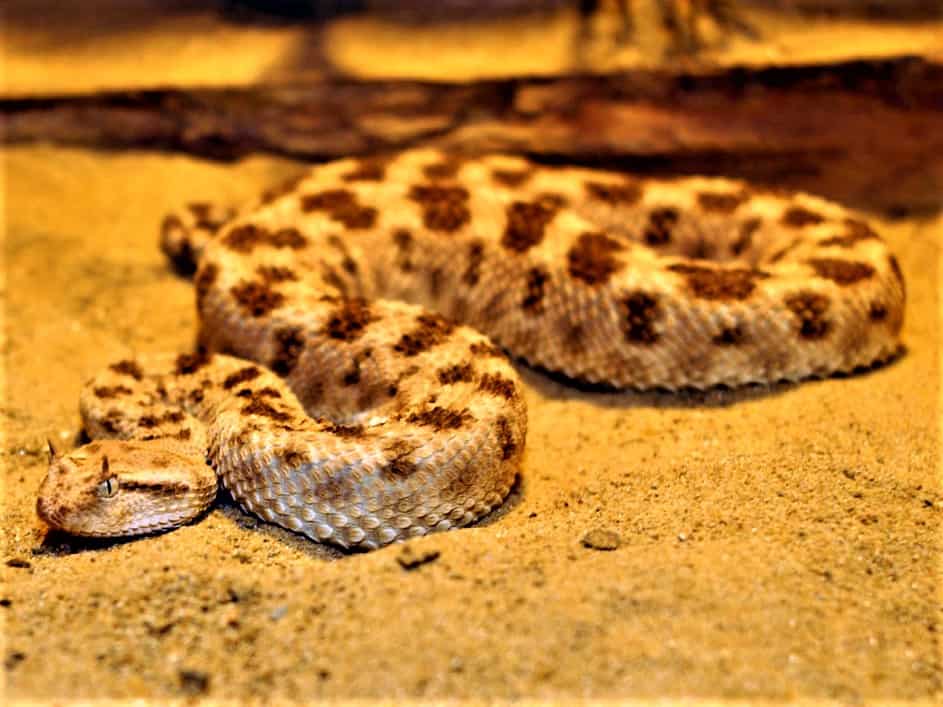
Because they have strongly keeled scales, this rubbing produces a rasping noise. In the wild they are typically ambushed predators, lying submerged in sand adjacent to rocks or under vegetation. When approached they strike very rapidly, holding on to the captured prey (small birds and rodents) until the venom takes effect.
The Deadliest Snakes in Israel: Sahara Sand Viper
Small (20-30 cm) and stout, it has a broad, triangular head with small eyes set well forward and situated on the junction of the side and the top of the head. Their hunting strategy is unique when compared to that of other Viperidae because they use a combination of both sit-and-wait ambushing and active hunting. The tip of the tail of the females can sometimes be black and to be found in the Negev.
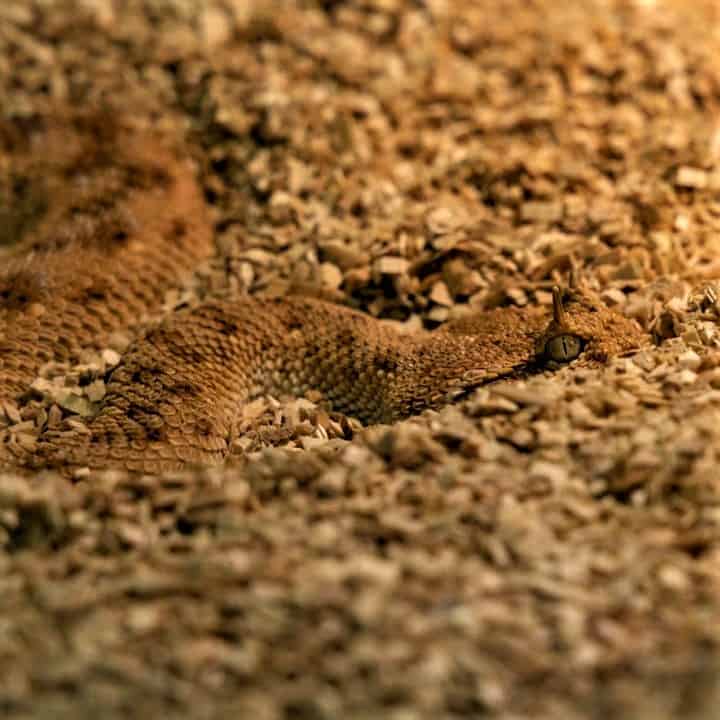
The Deadliest Snakes in Israel: Pseudocerastes
Pseudocerastes are often referred to as false horned vipers because of the horn-like structures above their eyes that are made up of numerous small scales. This is in contrast to the “true” horned viper, Cerastes cerastes, which has similar supraorbital “horns”, each consisting of a single elongated scale. This type of snake is kind of clumsy and long.
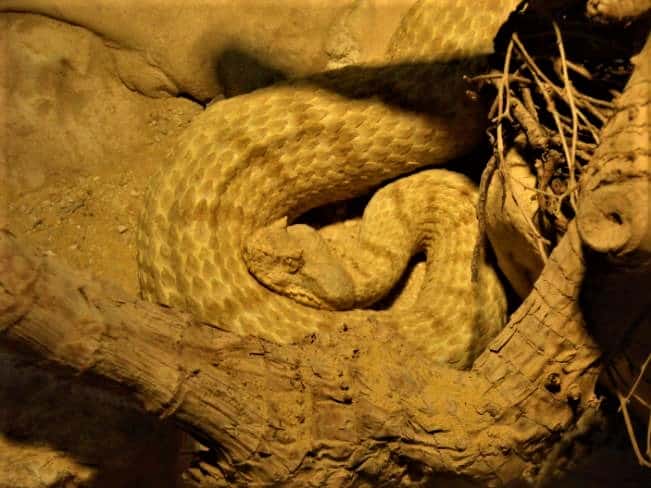
(Credit: Androctonus CC BY SA 3.0)
Israeli mole viper (Atractaspis engaddensis)
First discovered in 1944 by Heinrich Mendelssohn and Georg Haaz in Ein Gedi, hence its name. The black color and small head distinguish him from all the other venomous snakes we have seen—one of the deadliest snakes you can find here in the Land of Israel. Most of the time, he will spend his time under the surface or in dens; this is why his head is so tiny. In Israel, we will find him in the Arava Valley, Dead Sea Area, and north to the Jordan Valley, even in the Negev and the Judean Desert. Watch out!
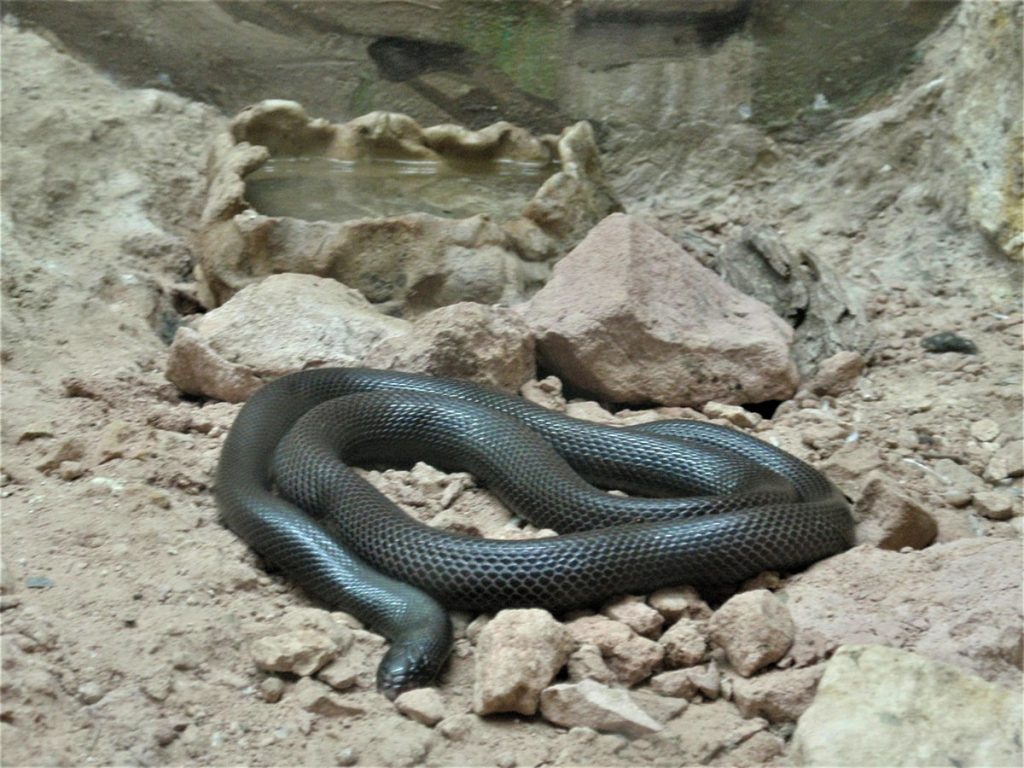
(Credit: Shoal – GNU Free Documentation License)
Even though, his habitat is the desert he will find it next to Oases, rivers, and fresh springs where there will be some vegetation, probably because he needs the moisture. Like I have mentioned their venom is the deadliest known today in Israel. The smallest amount of venom can kill most small rodents. There is no antivenom known till today.







